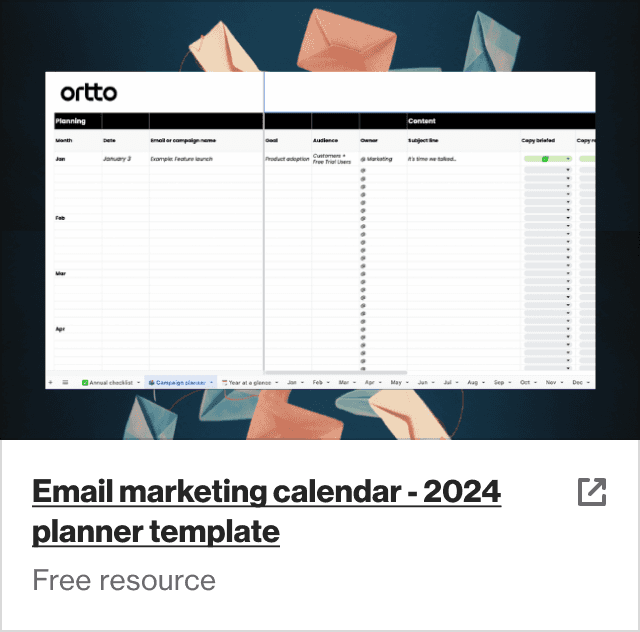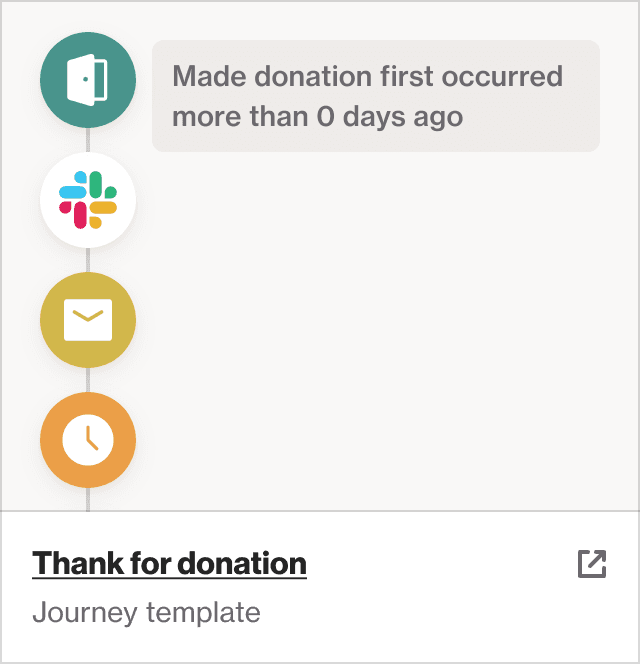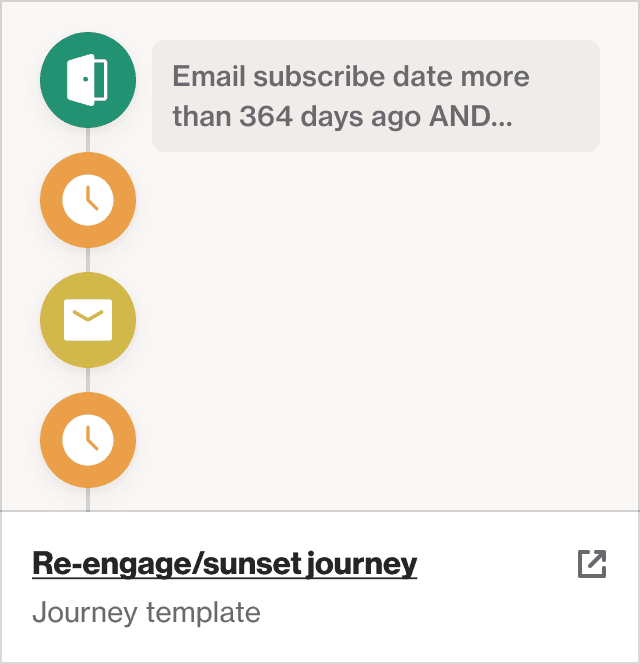Marketing a not-for-profit organization comes with a unique set of challenges and opportunities. You’re doing more than selling a brand or a product, you’re furthering a mission. You’re typically running pretty lean, and you’re held accountable for every dollar spent. You’re competing for attention on the same platforms as every other marketer, yet your message is more nuanced and complicated than most.
At times, it can feel impossible. But with the right data, platforms, and processes in place, you can create a marketing engine that meets your goals without burning yourself out.
In this guide, we’ll explore:
Nonprofit marketing objectives
Nonprofit marketing teams need to create valuable experiences for donors, volunteers, and new supporters or community members who can help you advance your mission. When this is achieved, you will be able to reach objectives like:
Raising awareness of an organization and cause
Attracting new constituents
Re-engaging with previous constituents
Fundraising
Building and inspiring a community
These macro goals can be broken down into measurable metrics that can be tracked, benchmarked against, and managed. For example:
Awareness metrics
Brand lift
Social followers or engagement
Website visits
Search impressions
Attracting new constituents
New donors
New volunteers
New inquiries
New partnerships
Re-engaging with previous constituents
Recovered donors
Recovered volunteers
Fundraising
Total funds raised
Total regular donations/memberships
Total new donations
Building and inspiring a community
Email subscribers
Social media followers
Total members
With fewer resources and time than other business types, the ability to quickly identify which channels, initiatives, and messages are advancing your mission and help you reach your KPIs, the better. Tracking these metrics from the get-go can help ensure you and your team can be nimble — and track ROI on campaigns and channels.
Step-by-step guide to building an NFP marketing plan
Whether you’re starting from scratch or reinvigorating your existing plan, this step-by-step guide will help you ensure that you have all the data and information you need to build a strategy that minimizes wastage (both ad spend and your time) while furthering your mission and increasing donations.
Step 1: Identify your marketing goals
Most NFPs will be tracking all of the metrics listed above. But that doesn’t mean they are all of equal importance. When your goals are spread too thin, so is your focus. Instead, you will want to select three key goals that your team are driving towards — in most cases, these goals will be related to total funds raised, total new donors engaged, and regular givers or members.
When one of these key goals is lagging or out-performing expectations, the other metrics can act as diagnostic tools, helping you to identify where to scale back and where to amp up.
Step 2: Define your audience
No matter how incredible your NFP’s mission is or how much you’ve accomplished, you will never appeal to everyone, and that’s ok. Use data on your existing audience, information gathered from interviews, independent research, and testing to define your audiences.
It’s likely you will have at least one donor audience segment and another volunteer audience defined, but if your goals are also around finding new partners (e.g. businesses) or ambassadors, you will want to develop a profile for each audience type.
As you are building your audiences, start to think about their behaviors, routines, and motivations. This information will help you in steps three and four.
Step 3: Identify your always-on channels and tactics
In the exercise above, you probably identified some of the channels your audience frequents. This will help you figure out where you need to show up with always-on messaging.
There’s no shortage of channels, and it’s impossible for an NFP to show up everywhere, so getting this right will be about finding the most effective channels for your audience.
The big three are:
Email marketing: For nonprofits, email marketing is a powerful tool to nurture donor relationships, welcome newcomers, and provide specialized content for recipients. In an industry that is time poor, automating email marketing is essential to long-term success. We’ve outlined three foundational automated email campaigns in the section below.
Social media: Some platforms will be more effective than others for reaching specific goals. Choose one to three hero platforms to prioritize, and add more if resources allow. For example, if you are looking for more businesses to sponsor events and contribute donations, but you also have a message that resonates with everyday millennials and Gen Z, you might want to hero LinkedIn and Instagram, then experiment with TikTok if resources allow.
Website and search: Your website is both your homebase (the place where all marketing leads) and an in-road (discoverable through search). It’s incredibly valuable and should never be considered ‘set and forget.’ Aim to add new content (e.g. articles, case studies, success stories, or feature pages) regularly, and optimize existing pages for search.
Other always-on channels might include:
Performance marketing (paid search/social)
SMS marketing
Push notifications
Public relations
Video / YouTube
Which of these are truly ‘always on’ will largely depend on your goals, budget, and team.
Step 4: Build your marketing calendar
Always-on marketing should be about building awareness, increasing email subscribers, and ongoing fundraising. Your marketing calendar will cover everything else — the big events, moments, partnerships, and campaigns you have planned throughout the year.
When you’re mapping this out, consider where your biggest moments — like a major event, dedicated day or month (e.g. Movember or Dry July), or ambassador announcement — are placed and whether they can be staggered so you have at least one big talking point per quarter.
Other campaigns might be tied to specific goals or calendar moments — like a drive for membership donors around the new financial year or a campaign around Giving Tuesday.
These larger campaigns should be promoted across all of your always-on channels, in addition to other relevant platforms like:
Events
Webinars
Public speaking appearances
Partnerships
Billboards or other out-of-home
Television or BVOD

Step 5: Analyze and optimize
Regularly analyzing the performance of different channels and messages, and optimizing towards the most effective of them is essential for NFPs with little resources to waste. Look for ways to double down on success, spot points of friction and remove them, and conduct regular tests and experiments to generate new learnings.
Four essential email campaigns for NFPs
Automated email is an important channel for all marketers, especially nonprofit marketers who need to keep their existing audience engaged, inspire regular giving, and maximize their resources.
Getting automated email marketing right starts with unifying and unlocking your data. When your customer data is unified in one platform, you can get a complete profile of your donors, volunteers, and partners, then target them with personalized, right time messaging based on their behaviors.
Must-send messages: Charitable donations are tax deductible in most countries, meaning it is important to send out donor receipts promptly. It is best practice for registered nonprofits to send an acknowledgment and donation receipt within 24-48 hours of the donor contributing. Mark all receipts and tax statements as transactional to ensure the email is sent and overrides any subscription preferences.
These four email campaigns use customer data to drive action.
1. Nurture to donate
The path from discovery to donate is educational. New audience members hand over their email addresses because they like what you have to say — but they want more information before they are ready to give their money or time to your organization.
A nurture journey automates this education process. It explains what you do, why you do it, why your audience should care and builds to a CTA that explains how they can help.
The template below is nurture playbook containing three emails that a new audience member will be sent over the course of seven days. When a subscriber donates, they exit the playbook. You can easily adjust the entry criteria to send the playbook to a specific audience segment, change the content, or add more emails over a longer period of time.

2. Regular giver engagement
Most not-for-profits have a regular giving program where donors set up automatic monthly donations, rather than a one-off lump sum. This can be a great way to ensure that some of your funds are reliable, sustainable, and predictable, plus it can help with donor retention.
Your regular donors are gold — so you want to be sure to regularly check in with them and stay top of mind. Transactional emails will be a part of this, both monthly receipts and annual tax statements, but going a step further can inspire both loyalty and referrals.
Once you have a regular donor audience segment, you can set up a couple of different email journeys that are triggered and personalized with data:
Donation tallies and ‘how you’ve helped’ reports
Thank you letters from CEO or board members when donation goals are reached
These automated campaigns can happen in conjunction with a couple of regular newsletters than aim to keep donors informed. For example:
Quarterly updates on the organization’s progress
News and updates related to your cause
3. Thank you journey
A simple automated thank you journey can go a long way to ensuring every donation is celebrated internally, and that your gratitude is shared with the journey.
The template linked below includes a confirmation email that is sent as soon as a donation is made, a thank you note from an organization leader, and a follow-up explaining how the funds have contributed. It also includes a Slack notification that notifies your team about the new donation. This journey uses a custom activitiy to show the amount donated both in email communications and the Slack message, and can be personalized further with other relevant custom fields or activities you create, like plan types on regular giving programs or donation number.

4. Reengagement journey
Losing subscribers and donors is inevitable, but not all lost audience members have abandoned you intentionally. Life gets busy, and sometimes a simple reminder can reengage them to donate again.
You can take a two-fold approach to reengagement — the first campaign can attempt to reengage subscribers who once donated, showing them the work you’ve achieved and inspiring them to donate by outlining your new goals. If they remain unengaged for 365 days, it’s time for a last-ditch attempt. The template below is a reengage/sunset journey that simply encourages your lapsed subscribers to change their email preferences or be removed from further contact.
Hard as it may be to sunset subscribers, it is better for your email deliverability to move on and focus on the new wave of subscribers than for your emails to continuously be left unopened.

Final word
Not-for-profit marketing requires focus and strategy. It demands that every dollar and minute is accounted for and that every message is powerful enough to capture attention. Lean on your platforms and processes to make the task at hand more achievable — clean, unified data aids in performance and tracking, automation and AI save you precious time, and defining an audience stops wastage.



